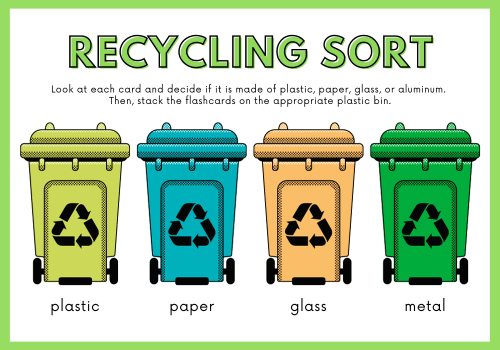Recycling Sorting Activity & Worksheet to Empower Grade 3 Eco-Champions
Teaching children about recycling is a crucial step in fostering environmental awareness and responsibility from an early age. Grade 3 is an ideal time to introduce students to the concept of recycling, its importance, and how they can actively participate in preserving our planet.
One effective way to engage students in this topic is through a recycling sorting activity and recycling sorting worksheet. This comprehensive article will guide educators on how to plan and execute a recycling sorting activity and provide a downloadable worksheet for grade 3 students to reinforce their learning.
The Importance of Recycling Education for Grade 3
SECTIONS
ToggleGrade 3 is a significant developmental stage for children, and it’s essential to introduce them to the concept of recycling to instill eco-conscious habits. At this age, children are curious and eager to learn about the world around them. Recycling education can help them understand:
Environmental Responsibility
Teach children that recycling is a responsible way to dispose of waste that can harm the environment if not managed correctly.
Resource Conservation
Explain that recycling conserves valuable resources like trees, energy, and water by reducing the need for new raw materials.
Reducing Landfill Waste
Emphasize that recycling helps reduce the amount of waste sent to landfills, which can be harmful to the environment.
Energy Savings
Discuss how recycling saves energy compared to producing goods from raw materials.
The Recycling Sorting Worksheet
A recycling sorting worksheet is a simple but effective tool to reinforce recycling concepts among young learners. Here’s what it typically includes:
Images of Items
The worksheet features pictures of various items, some recyclable and some not.
Sorting Task
Students are tasked with sorting these items into two categories: “Recyclable” and “Non-Recyclable.”
Learning Opportunity
Alongside each image, there may be brief descriptions or labels to help students understand why an item belongs to one category or the other.
Engaging Activities with the Worksheet
To make the recycling sorting worksheet engaging for young learners, consider the following approaches:
Hands-On Sorting: Provide actual recyclable and non-recyclable items for students to sort in addition to the worksheet. This tactile experience reinforces their understanding.
Group Discussion: After completing the worksheet, hold a group discussion to review their choices. Encourage students to explain their reasoning, promoting critical thinking.
Art Integration: Encourage creativity by having students create artwork using recycled materials. This can complement the worksheet’s lessons and inspire artistic expression.
Real-World Examples: Share stories or videos of real-world recycling efforts and their positive impact. This helps students connect the worksheet’s lessons to the larger context.
Planning the Recycling Sorting Activity
Before conducting the activity, you’ll need to gather the necessary materials and plan the logistics:
Materials Required
- Assorted recyclable items (e.g., paper, plastic bottles, aluminum cans, cardboard)
- Non-recyclable items (e.g., food wrappers, broken toys)
- Sorting bins or containers labeled “Recyclable” and “Non-Recyclable”
- Gloves and hand sanitizer for hygiene
- Safety scissors for any cutting needed
- Charts or posters explaining what can be recycled
Procedure
Introduction to Recycling: Begin by discussing the importance of recycling with your grade 3 students. Use simple language and examples to help them grasp the concept.
Identifying Recyclables: Show students examples of recyclable items and non-recyclable items. Explain how to distinguish between the two, emphasizing factors like materials, cleanliness, and condition.
Sorting Activity: Organize the students into small groups and distribute the recyclable and non-recyclable items. Have them sort the items into the appropriate bins. Encourage discussion and teamwork during this process.
Group Discussion: After the sorting activity, gather the students for a group discussion. Ask them to share their observations, what they learned, and any challenges they faced. Clarify any misconceptions.
Worksheet Time: To reinforce their understanding, provide students with a recycling sorting worksheet. This worksheet will allow them to independently practice what they’ve learned.
Conclusion
Introducing recycling to grade 3 students through a recycling sorting activity and recycling sorting worksheet is an effective way to impart environmental awareness and responsibility. By engaging them in hands-on learning, you can empower them to make informed decisions about waste disposal and contribute to a sustainable future. Recycling education in grade 3 sets the foundation for lifelong eco-friendly practices and responsible citizenship.
.png)


